|
|
||||||||||||||||||||||||||||||||||||||||||||||||||||||||||
|
Please sign my Guestbook and leave feedback |
||||||||||||||||||||||||||||||||||||||||||||||||||||||||||
|
Recent Additions |
||||||||||||||||||||||||||||||||||||||||||||||||||||||||||
|
This story begins at Ryhall in Rutland on the outskirts of Stamford. Its church is not well-known on the church architecture “trail”. I moved very close to it in October 2009. I had already tentatively launched my website www.greatenglishchurches.co.uk and hoped to find good reason to write about Ryhall Church. |
|||||||||||||||||||||||||
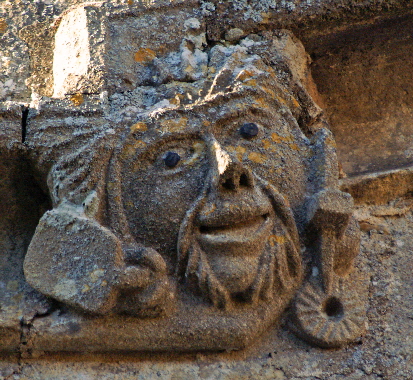 |
|||||||||||||||||||||||||
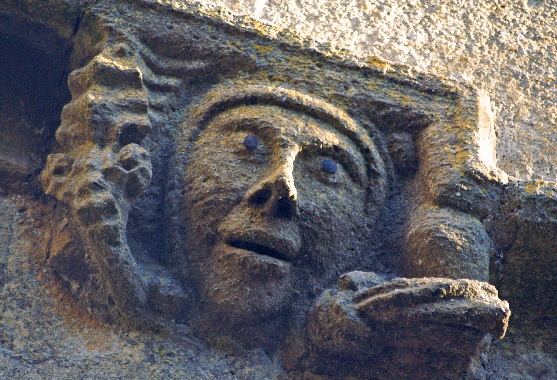 |
|||||||||||||||||||||||||
|
The Ryhall Tradesmen: Left: Mason, Miller and Baker Right: The Fuller and Blacksmith. |
|||||||||||||||||||||||||
|
The story continues at Oakham Church (14 miles away and also in Rutland) which I visited shortly afterwards mainly to see the splendid Decorated style arcade capitals. I found that the church has friezes even more extensive than those at Ryhall, albeit much less varied. On the west end of the north aisle, however, was a cluster of grotesque figures incontrovertibly by the man who carved the maned figures at Ryhall and also with black eyes. |
|||||||||||||||||||||||||
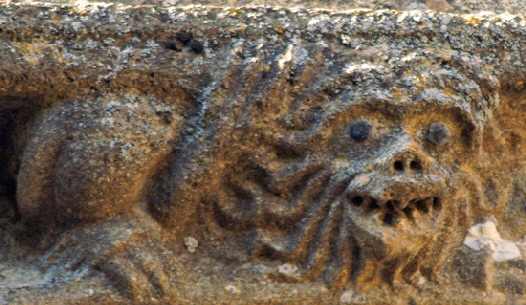 |
 |
||||||||||||||||||||||||
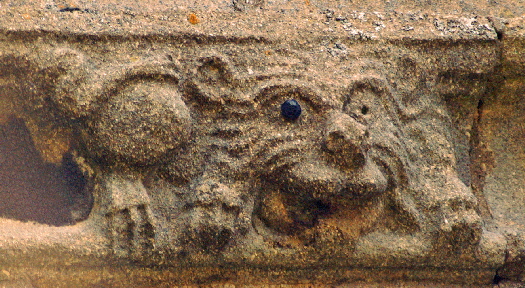 |
|||||||||||||||||||||||||
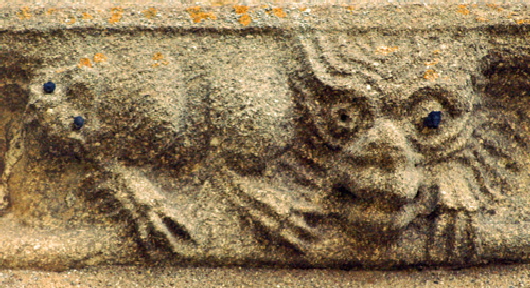 |
|||||||||||||||||||||||||
|
Grotesque Carvings at Ryhall (top two photographs) and Oakham (bottom two photographs) |
|||||||||||||||||||||||||
|
There are quite a lot of distinctive characteristics about these carvings. The main one is the black eyes that are made of lead and about which we will be talking a great deal more in future chapters. Some are missing. Note that the carvings upper and lower left even have miniature figures incorporated into the designs, easily distinguishable again by the lack eyes. The “tradesman” sculptures at Ryhall are also clearly carved by the same artist. My telephoto lens at Oakham Church also revealed a cheeky little secret: there are three separate images of a man bending over, head between his legs with a strategically-placed little hole, “mooning” at the world! The sex of the figures is not left to the imagination! I called these the “Mooning Men”. |
|||||||||||||||||||||||||
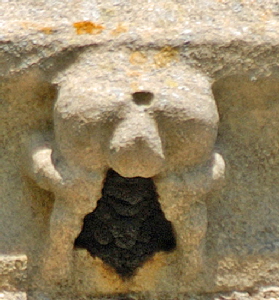 |
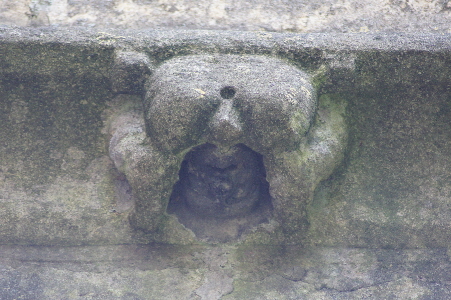 |
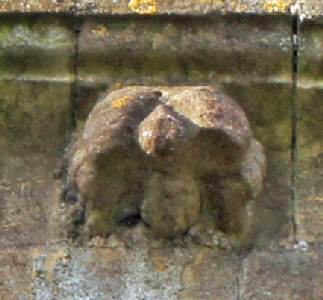 |
|||||||||||||||||||||||
|
Oakham Mooners: Left South Clerestory; Centre: South West Porch: Right: North Clerestory |
|||||||||||||||||||||||||
|
Students of church architecture take naughty – one might even say occasionally prurient - delight in the rude images that are sometimes seen on the outsides of our mediaeval churches. Our forefathers had a surprisingly robust attitude to such things. There are whole websites devoted to “exhibitionist” carvings with a wide variety of gaping pudenda, tumescent willies and cheeky bums on show! It is believed that the masons were given a free hand on the outsides of churches and they sometimes gave rein to a robust sense of humour. Three mooners on one parish church, however, still seems somewhat excessive and to the best of my knowledge unequalled on any other church in England. At this point, unless you are a student of the mediaeval stonemasonry industry I strongly recommend that you read my brief account of it here The Stonemasons and their World and The Stonemasons and their World Part II otherwise jump to Structure and Contents |
|||||||||||||||||||||||||